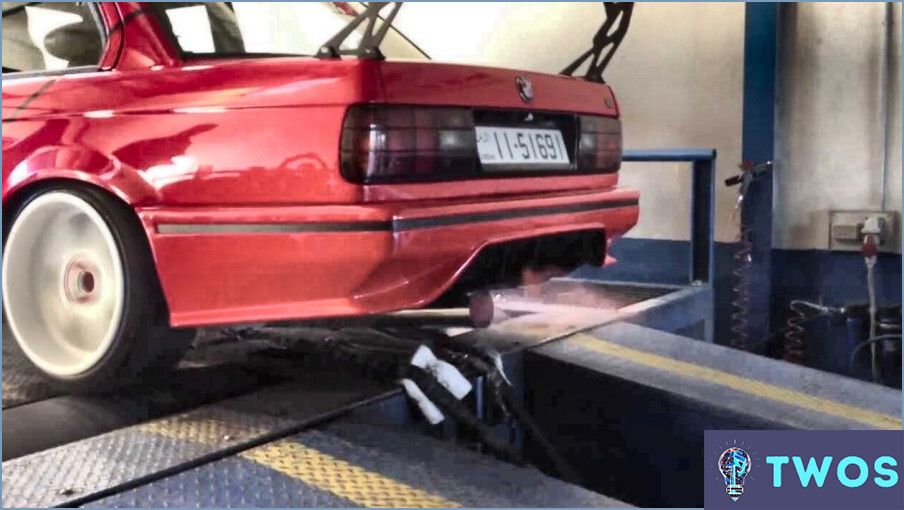How To Make Flames Come Out Of Car Exhaust?

Making flames come out of a car's exhaust involves a few steps.
Firstly, alter the fuel-to-air ratio in your car. This can be achieved by installing a fuel controller in your vehicle. This device allows you to adjust the amount of fuel that enters the engine, making it run rich.
Secondly, install an exhaust flame kit. These kits are designed to ignite unburned fuel exiting the exhaust system, creating a flame effect. They typically include a spark plug, coil, and control box.
Thirdly, modify the exhaust system. This involves installing a straight pipe exhaust. This type of exhaust system has fewer bends, allowing more unburned fuel to exit and ignite, creating flames.
Lastly, use a rev limiter. A rev limiter cuts off the fuel supply when the engine reaches a certain RPM, causing unburned fuel to exit the exhaust and ignite.
Remember, these modifications should be done by a professional to ensure safety and legality. Also, it's important to note that these modifications can potentially damage your vehicle and may not be legal in all areas.
As for the reference to cleaning a tape player in a car, it seems unrelated to the topic at hand. However, it's always good to maintain all aspects of your vehicle for optimal performance.
How can I make my exhaust pop without tune?
To make your exhaust pop without a tune, you can manipulate the fuel-air mixture in your engine. This can be achieved by downshifting or letting off the throttle quickly, causing a rich fuel-air mixture that doesn't fully combust, leading to the desired popping sound.
Here's a simple step-by-step guide:
- Accelerate your vehicle to a moderate speed.
- Shift down a gear abruptly.
- Release the throttle quickly.
This process causes unburnt fuel to enter the exhaust system, which then ignites and creates the popping sound. However, it's crucial to note that frequent popping might lead to wear and tear on your exhaust system over time.
Can any car shoot flames?
No car available on the market is designed to shoot flames from its exhaust. This phenomenon is typically associated with custom-built cars. These unique vehicles are modified in a way that allows them to emit flames, often for aesthetic or performance purposes. It's important to note that such modifications should be done responsibly, as they can pose safety risks and may not be legal in all jurisdictions.
Does shooting flames hurt your car?
Shooting flames from a car's exhaust pipe is not harmful to the vehicle. The process involves the heat from the flames vaporizing water in the air, leading to the breakdown of water molecules into hydrogen and oxygen. These gases are subsequently drawn into the engine. Here, they react with the fuel, resulting in the production of heat and light. This cycle is a normal part of the car's operation and does not cause damage.
Why do turbo cars shoot flames?
Turbocharged cars shoot flames due to a process known as afterburning or backfiring. This occurs when unburned fuel passes through the engine and reaches the hot exhaust system, causing it to ignite and produce a flame. The turbocharger plays a key role in this process. It increases the air flow through the engine, leading to more power and performance. However, this also means more fuel is used. If the fuel isn't fully combusted in the engine, it can end up in the exhaust system. When this unburned fuel comes into contact with the hot parts of the exhaust, it ignites, causing the spectacular flames often seen shooting from the exhausts of turbocharged cars.
Are exhaust flames illegal?
Exhaust flames legality varies significantly based on the jurisdiction. While there's no universal rule, it's typically illegal to use exhaust flames to ignite a fire. This is due to safety concerns and potential damage to property or individuals. Always consult local laws to ensure compliance.
Why do performance cars backfire?
Performance cars backfire primarily due to two reasons. Firstly, their exhaust systems, designed for high-performance driving, may struggle with the elevated heat and pressure when the car is driven to its extremes. Secondly, certain engine components might fail to endure the intense stress generated during a backfire.
- Exhaust System: The high-performance design may not cope with increased heat and pressure.
- Engine Components: Some may not withstand the high stress during a backfire.
Is backfire bad for car?
Backfire can have varying effects on a car, depending on factors such as vehicle condition and driving style. Generally, if a car is properly maintained and the driver avoids aggressive acceleration or braking, backfire may not be a significant issue. However, it's important to note that in certain cases, backfire can lead to engine or component damage. To minimize the risk of damage, regular maintenance and inspections are crucial. If you experience frequent or severe backfiring, it's advisable to consult a qualified mechanic to diagnose and address any underlying issues.
Deja una respuesta

Artículos Relacionados